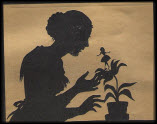R e c e n t P o s t i n g s
W e b l o g
Reprinted from the "Storytellers Unplugged" series
The Art of Crafting a Setting
Carole Lanham -
9/2/2012
 As a general rule, Iím not a fan of inventory lists that tell me every stick of
As a general rule, Iím not a fan of inventory lists that tell me every stick of
furniture in a room. If it fits the narrative style and flows naturally enough, it can certainly do the trick,
but a setting that performs one job and one job only is loafing. A good setting is only just barely
identifiable as setting. Done the way I like it, the reader gets a whole lot more than a picture of what
a place looks like.
There are many brilliant examples out there that are far better than any settings Iíve written myself
but Iím going to use a for instance that comes from one of my own short stories (called Yellow House),
because I know exactly what I was trying to achieve when I wrote it:
Bells climbed out of bed, stood on her tiptoes, and ran her fingers through Pippaís paper snowflakes,
the lot of which covered the attic ceiling like a lace cloud.
ďCareful of Goldilocks,Ē Pippa said. Pippaís snowflakes were an artistic wonder, each one
meticulously cut to tell a story. Her latest creation was spread on the blue rug beneath the portal
window amid little pips of paper and was to be the rose-vine-tangled bed of Sleeping Beauty. Highly
complicated.
Now, hopefully, if Iíve done the job right, the snowflakes, the blue rug, the portal window, and the
mess on the floor help to paint a picture of the bedroom in my story. But I want those snowflakes
to do more. I want them to create a sense of whimsy and magic without having to come straight
out and call the attic magical. I want to flood the room with a certain mood and establish a voice
for the story too. And Iíve another job in mind for those snowflakes, while Iím at it. When making
a paper snowflake, one forms a design by cutting holes in the bigger picture. Iím hoping Pippaís
snowflakes will support the characterization to follow, tipping off readers early on to the fact that
she is a girl who knows how to look for a picture in the missing parts of something. Finally, the
goal is always to tell a story in an interesting way. Whether Iíve succeeded or not in this instance,
that really is Job 1, isnít it?
Outside of mentioning (in separate passages throughout the course of the story), a vanity table
with a rat peeking out from under the faded skirt, a bedpost wearing a pair of wool stockings like
a winter hat, and five quilted beds belonging to the quintuplets who live in the attic bedroom,
those snowflakes hanging from the ceiling make up the bulk of my setting in terms of description.
But have I made you see it? Have I made you feel it? That is the question.
Like a theatrical production, writers use props to tell their story. In a play, props blend together
on stage to create an overall appearance. Some props get used for specific things. A pair of
sewing scissors on a table in Dial M for Murder becomes a weapon of self-defense. Until the
scissors are plunged into the body of an intruder, its presence is subtle and barely noticeable.
Itís natural for the scissors to be on the table because theyíre in a room where they appear to
belong, and the woman who lives in the room is someone who sews. To point out the scissors
or draw attention to them too early would ruin the mystery, yet there they sit, offering a sense
of normalcy and hominess to the scene that helps to make the crime, when it comes, all the
more startling.
Suppose the woman of the house had walked on stage at the beginning of the show and said
to the other characters, ďHere is my green sofa, my television set, and my sewing basket with
scissorsÖĒ This would not only be awkward, but also a little telling. A writer, of course,
doesnít have the luxury of letting their audience see everything instantly and indiscriminately
when the curtain parts and the lights come up, but their job is nonetheless the same. To add
a pair of scissors to a setting, a writer must reveal it organically by having their protagonist do
something like bump into a dress dummy while crossing the room, thus introducing the idea
that someone in the house sews.
If it seems like Iím confusing the items that make up setting, thatís only because I think
setting should be jumbled up with everything else. Itís more fun and makes for more
interesting reading. As a writer, Iím constantly working to improve my ability to be a good
storyteller and setting that doesnít help to tell a story is a waste of words. Iím sure I donít
always get it right but I definitely recognize an exceptional setting when I read a good book.
Usually, it does not jump out at me and wave a flag and say HERE I AM! ARENíT I SWELL?
Rather, I find it in the rusty squeak of a bent weathervane on the roof of a dying man who
never found what he was looking for in life. I smell it in the embroidered pillowcase of a
departed wife who washed her hair with rosewater. I see it glinting on a table in a dark
room that features a curtain with a man hiding behind it.
Oh boy! I just love me a good setting. I wish you much fun writing yours.

|